Résultats de recherche de titre
Articles 1492161 à 1492180 sur 1498776
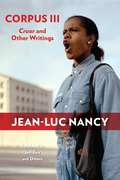
Corpus III: Cruor and Other Writings
Par Jean-Luc Nancy. 2023
A beautiful, profound series of reflections on the body by one of the most prominent and consequential philosophers of continental…
EuropeThis landmark volume brings into English Jean-Luc Nancy’s last completed work and concludes his remarkable philosophical reflections on the body, a project he began almost thirty years ago. Taking the body as an intersection of pulsing life and destructive cruelty on a global scale, Nancy’s account becomes more vivid, more physical, than ever, even as it ventures into language that is as lyrical as it is profound. This vividness is manifest in blood: as it flows, in all its pulsing and forceful circulation, and as it spills, in the cruelty of existences confronted daily by countless destructions. This can be described as sanguis and cruor, the two Latin words for blood’s intermingled but distinct aspects. This distinction allows Nancy to highlight an almost mystical sense of the body (yet one that remains soberly on this side of its manifest insistence), alongside the cruelty that pervades our world—a world whose very existence is threatened by its reduction to mere objects.The exceptional writings brought together in Corpus III comprise a masterful work of philosophy that marries rigorous erudition—on Freud, Nietzsche, and others—with rich poetic language and an actual poem. Nancy’s thought opens the body onto its own unaccountable origins, its plural singularities, its enmeshed instantiations, and its excessive irreducibles, which are also the elusive excesses of language. Whereas in earlier texts Nancy has referred to this excess as poetry, here he performs it in the form of a poem, in the extraordinary hymn entitled Stoma. While the publication of a poem by Nancy is a notable event, equally noteworthy is a remarkable essay entitled “Scandalous Death,” in which Nancy meditated on a subject that was to come to him too soon after. Above all, the book is crucial for bringing into English Cruor, the very last book Nancy completed before his death, an evocative meditation offered by a great thinker on the complex conditions of his own—and our—singular survival.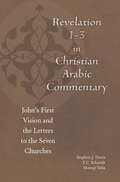
Revelation 1-3 in Christian Arabic Commentary: John's First Vision and the Letters to the Seven Churches (Christian Arabic Texts in Translation)
Par Ibn Kātib Qayṣar, Būlus Al-Būshī. 2019
The first publication in a new series—Christian Arabic Texts in Translation, edited by Stephen Davis—this book presents English-language excerpts from…
thirteenth-century commentaries on the Apocalypse of John by two Egyptian authors, Būlus al-Būshī and Ibn Kātib Qas.ar. Accompanied by scholarly introductions and critical annotations, this edition will provide a valuable entry-point to important but understudied theological work taking place at the at the meeting-points of the medieval Christian and Muslim worlds.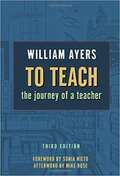
To Teach: The Journey Of A Teacher
Par William Ayers. 2010
To Teach is the now-classic story of one teacher’s odyssey into the ethical and intellectual heart of teaching. For almost…
two decades, it has inspired teachers across the country to follow their own paths, face their own challenges, and become the teachers they long to be. Since the second edition, there have been dramatic shifts to the educational landscape: the rise and fall of NCLB, major federal intervention in education, the Seattle and Louisville Supreme Court decisions, the unprecedented involvement of philanthropic organizations and big city mayors in school reform, the financial crisis, and much more. This new third edition is essential reading amidst today’s public policy debates and school reform initiatives that stress the importance of “good teaching.” To help bring this popular story to a new generation of teachers, Teachers College Press is publishing an exciting companion volume, To Teach: The Journey, in Comics. In this graphic novel, Ayers and talented young artist Ryan Alexander-Tanner bring the celebrated memoir to life. The third edition of To Teach, paired with the new graphic novel, offers a unique teaching and learning experience that broadens and deepens our understanding of what teaching can be. Together, these resources will capture the imaginations of pre- and in-service teachers who are ready to follow their own Yellow Brick Roads. The third edition of To Teach offers today’s teachers: Inspiration to help them reconnect with their highest aspirations and hopes. A practical guide to teaching as a moral practice. An antidote to teaching as a linear, connect-the-dots enterprise. A study guide that is available online at www.tcpress.com.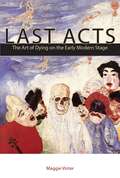
Last Acts: The Art of Dying on the Early Modern Stage
Par Maggie Vinter. 2019
Last Acts argues that the Elizabethan and Jacobean theater offered playwrights, actors, and audiences important opportunities to practice arts of…
dying. Psychoanalytic and new historicist scholars have exhaustively documented the methods that early modern dramatic texts and performances use to memorialize the dead, at times even asserting that theater itself constitutes a form of mourning. But early modern plays also engage with devotional traditions that understand death less as an occasion for suffering or grief than as an action to be performed, well or badly.Active deaths belie narratives of helplessness and loss through which mortality is too often read and instead suggest how marginalized and constrained subjects might participate in the political, social, and economic management of life. Some early modern strategies for dying resonate with descriptions of politicized biological life in the recent work of Giorgio Agamben and Roberto Esposito, or with ecclesiastical forms. Yet the art of dying is not solely a discipline imposed upon recalcitrant subjects. Since it offers suffering individuals a way to enact their deaths on their own terms, it discloses both political and dramatic action in their most minimal manifestations. Rather than mournfully marking what we cannot recover, the practice of dying reveals what we can do, even in death. By analyzing representations of dying in plays by Marlowe, Shakespeare, and Jonson, alongside devotional texts and contemporary biopolitical theory, Last Acts shows how theater reflects, enables, and contests the politicization of life and death.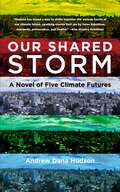
Our Shared Storm: A Novel of Five Climate Futures
Par Andrew Dana Hudson. 2022
Through speculative fiction, five interlocking novelettes explore the possible realities of our climate future.What is the future of our climate?…
Given that our summers now regularly feature Arctic heat waves and wildfire blood skies, polar vortex winters that reach all the way down to Texas, and “100-year” storms that hit every few months, it may seem that catastrophe is a done deal. As grim as things are, however, we still have options. Combining fiction and nonfiction and employing speculative tools for scholarly purposes, Our Shared Storm explores not just one potential climate future but five possible outcomes dependent upon our actions today. Written by speculative-fiction writer and sustainability researcher Andrew Dana Hudson, Our Shared Storm features five overlapping fictions to employ a futurist technique called “scenarios thinking.” Rather than try to predict how history will unfold—picking one out of many unpredictable and contingent branching paths—it instead creates a set of futures that represent major trends or counterposed possibilities, based on a set of climate-modeling scenarios known as the Shared Socioeconomic Pathways (SSPs).The setting is the year 2054, during the Conference of the Parties global climate negotiations (a.k.a., The COP) in Buenos Aires, Argentina. Each story features a common cast of characters, but with events unfolding differently for them—and human society—in each alternate universe. These five scenarios highlight the political, economic, and cultural possibilities of futures where investments in climate adaptation and mitigation promised today have been successfully completed, kicked down the road, or abandoned altogether. From harrowing to hopeful, these stories highlight the choices we must make to stabilize the planet.Our Shared Storm is an experiment in deploying practice-based research methods to explore the opportunities and challenges of using climate fiction to engage scientific and academic frameworks.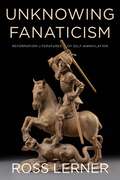
Unknowing Fanaticism: Reformation Literatures of Self-Annihilation
Par Ross Lerner. 2019
We may think we know what defines religious fanaticism: violent action undertaken with dogmatic certainty. But the term fanatic, from…
the European Reformation to today, has never been a stable one. Then and now it has been reductively defined to justify state violence and to delegitimize alternative sources of authority. Unknowing Fanaticism rejects the simplified binary of fanatical religion and rational politics, turning to Renaissance literature to demonstrate that fanaticism was integral to how both modern politics and poetics developed, from the German Peasants’ Revolt to the English Civil War.The book traces two entangled approaches to fanaticism in this long Reformation moment: the targeting of it as an extreme political threat and the engagement with it as a deep epistemological and poetic problem. In the first, thinkers of modernity from Martin Luther to Thomas Hobbes and John Locke positioned themselves against fanaticism to pathologize rebellion and abet theological and political control. In the second, which arose alongside and often in response to the first, the poets of fanaticism investigated the link between fanatical self-annihilation—the process by which one could become a vessel for divine violence—and the practices of writing poetry. Edmund Spenser, John Donne, and John Milton recognized in the fanatic’s claim to be a passive instrument of God their own incapacity to know and depict the origins of fanaticism. Yet this crisis of unknowing was a productive one. It led these writers to experiment with poetic techniques that would allow them to address fanaticism’s tendency to unsettle the boundaries between human and divine agency and between individual and collective bodies. These poets demand a new critical method, which this book attempts to model: a historically-minded and politicized formalism that can attend to the complexity of the poetic encounter with fanaticism.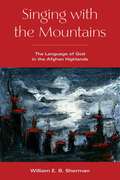
Singing with the Mountains: The Language of God in the Afghan Highlands
Par William Sherman. 2024
Winner, Carolina's Outstanding Contribution to Middle East and Islamic Studies Book AwardAn illuminating story of a Sufi community that sought…
the revelation of GodIn the Afghan highlands of the sixteenth century, the messianic community known as the Roshaniyya not only desired to find God’s word and to abide by it but also attempted to practice God’s word and to develop techniques of language intended to render their own tongues as the organs of continuous revelation. As their critics would contend, however, the Roshaniyya attempted to make language do something that language should not do—infuse the semiotic with the divine. Their story thus ends in a tower of skulls, the proliferation of heresiographies that detailed the sins of the Roshaniyya, and new formations of “Afghan” identity.In Singing with the Mountains, William E. B. Sherman finds something extraordinary about the Roshaniyya, not least because the first known literary use of vernacular Pashto occurs in an eclectic, Roshani imitation of the Qur’an. The story of the Roshaniyya exemplifies a religious culture of linguistic experimentation. In the example of the Roshaniyya, we discover a set of questions and anxieties about the capacities of language that pervaded Sufi orders, imperial courts, groups of wandering ascetics, and scholastic networks throughout Central and South Asia.In telling this tale, Sherman asks the following questions: How can we make language shimmer with divine truth? How can letters grant sovereign power and form new “ethnic” identities and ways of belonging? How can rhyme bend our conceptions of time so that the prophetic past comes to inhabit the now of our collective moment? By analyzing the ways in which the Roshaniyya answered these types of questions—and the ways in which their answers were eventually rejected as heresies—this book offers new insight into the imaginations of religious actors in the late medieval and early modern Persianate worlds.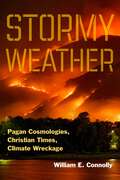
Stormy Weather: Pagan Cosmologies, Christian Times, Climate Wreckage
Par William E. Connolly. 2024
Composed as a counter-history of western philosophical and political thought, Stormy Weather explores the role western cosmologies have played in…
the conquests of paganism in Europe and the Americas, the production of climate wreckage, and the concealment of that wreckage from western humanists and earth scientists until late in the day. A lived cosmology, Connolly says, contains embedded understandings about the beginnings of the earth and the way time unfolds. The text engages the major western cosmologies of Augustine, Descartes, Kant, Tocqueville, together with pagan and minor western orientations that posed challenges to them or could have. Hesiod, Ovid, William Apess, Amazonian and Aztec cosmologies, Catherine Keller’s minor Christianity, James Baldwin, and Michel Serres instigate key responses, often challenging binary logics and the subject/object dichotomy with a world of multiple human and nonhuman subjectivities. Connolly pursues a conception of time as a multiplicity of intersecting temporalities to come to terms with the vicissitudes of climate destruction and the grandeur of an earth neither highly susceptible to mastery nor designed to harmonize smoothly with humans. The book revisits the “improbable necessity” of a politics of swarming to respond to the ongoing wreckage and potential fascist responses to vast infusions of climate refugees from the south into temperate-zone capitalist states. Stormy Weather draws on the work of earth scientists, indigenous thinkers, naturalists, humanists, and students of nonwestern cosmologies. Ultimately, Connolly contends that critical intellectuals today must not remain enclosed in disciplinary silos, or even in “the humanities” as currently defined, to do justice to our moment of climate wreckage.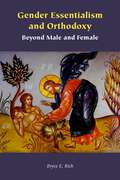
Within contemporary orthodoxy, debates over sex and gender have become increasingly polemical over the past generation. Beginning with questions around…
women’s ordination, arguments have expanded to include feminism, sexual orientation, the sacrament of marriage, definitions of family, adoption of children, and care of transgender individuals. Preliminary responses to each of these topics are shaped by gender essentialism, the idea that male and female are ontologically fixed and incommensurate categories with different sets of characteristics and gifts for each sex. These categories, in turn, delineate gender roles in the family, the church, and society.Gender Essentialism and Orthodoxy offers an immanent critique of gender essentialism in the stream of the contemporary Orthodox Church influenced by the “Paris School” of Russian émigré theologians and their heirs. It uses an interdisciplinary approach to bring into conversation patristic reflections on sex and gender, personalist theological anthropology, insights from gender and queer theory, and modern biological understandings of human sexual differentiation. Though these are seemingly unrelated discourses, Gender Essentialism and Orthodoxy reveals unexpected points of convergence, as each line of thought eschews a strict gender binary in favor of more open-ended possibilities.The study concludes by drawing out some theological implications of the preceding findings as they relate to the ordination of women to the priesthood, same-sex unions and sacramental understandings of marriage, definitions of family, and pastoral care for intersex, transgender, and nonbinary parishioners.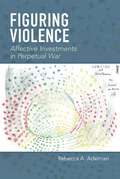
Figuring Violence: Affective Investments in Perpetual War
Par Rebecca A. Adelman. 2019
In the United States, the early years of the war on terror were marked by the primacy of affects like…
fear and insecurity. These aligned neatly with the state’s drive toward intensive securitization and an aggressive foreign policy. But for the broader citizenry, such affects were tolerable at best and unbearable at worst; they were not sustainable. Figuring Violence catalogs the affects that define the latter stages of this war and the imaginative work that underpins them. These affects—apprehension, affection, admiration, gratitude, pity, and righteous anger—are far more subtle and durable than their predecessors, rendering them deeply compatible with the ambitions of a state embroiling itself in a perpetual and unwinnable war.Surveying the cultural landscape of this sprawling conflict, Figuring Violence reveals the varied mechanisms by which these affects have been militarized. Rebecca Adelman tracks their convergences around six types of beings: civilian children, military children, military spouses, veterans with PTSD and TBI, Guantánamo detainees, and military dogs. All of these groups have become preferred objects of sentiment in wartime public culture, but they also have in common their status as political subjects who are partially or fully unknowable. They become visible to outsiders through a range of mediated and imaginative practices that are ostensibly motivated by concern or compassion. However, these practices actually function to reduce these beings to abstracted figures, silencing their political subjectivities and obscuring their suffering. As a result, they are erased and rendered hypervisible at once. Figuring Violence demonstrates that this dynamic ultimately propagates the very militarism that begets their victimization.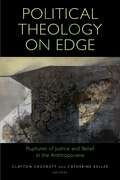
Political Theology on Edge: Ruptures of Justice and Belief in the Anthropocene (Transdisciplinary Theological Colloquia)
Par Clayton Crockett and Catherine Keller. 2022
In Political Theology on Edge, the discourse of political theology is seen as situated on an edge—that is, on the…
edge of a world that is grappling with global warming, a brutal form of neoliberal capitalism, protests against racism and police brutality, and the COVID-19 pandemic. This edge is also a form of eschatology that forces us to imagine new ways of being religious and political in our cohabitation of a fragile and shared planet. Each of the essays in this volume attends to how climate change and our ecological crises intersect and interact with more traditional themes of political theology.While the tradition of political theology is often associated with philosophical responses to the work of Carl Schmitt—and the critical attempts to disengage religion from his rightwing politics—the contributors to this volume are informed by Schmitt but not limited to his perspectives. They engage and transform political theology from the standpoint of climate change, the politics of race, and non-Christian political theologies including Islam and Sikhism. Important themes include the Anthropocene, ecology, capitalism, sovereignty, Black Lives Matter, affect theory, continental philosophy, destruction, and suicide. This book features world renowned scholars and emerging voices that together open up the tradition of political theology to new ideas and new ways of thinking.Contributors: Gil Anidjar, Balbinder Singh Bhogal, J. Kameron Carter, William E. Connolly, Kelly Brown Douglas, Seth Gaiters, Lisa Gasson-Gardner, Winfred Goodwin, Lawrence Hillis, Mehmet Karabela, Michael Northcott, Austin Roberts, Noëlle Vahanian, Larry L. Welborn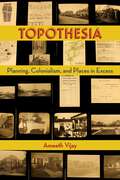
Topothesia: Planning, Colonialism, and Places in Excess
Par Ameeth Vijay. 2023
SHORTLISTED, 2024 MSA FIRST BOOK PRIZETopothesia reads urban planning as a mode of speculative fiction, one inextricably linked to histories…
of British colonialism and liberalism through a particular understanding of place. The book focuses on town planning from the late nineteenth century to the present day, showing how the contemporary geography of Britain—sharply unequal and marked by racial division—continues ideologies of place established in colonial contexts. Specifically, planning allows for the speculative construction of future places that are both utopian in their ability to resolve political disagreement and at the same tantalizingly realizable, able to be produced in concrete reality. This speculative imaginary, I argue, is only possible within the ideological framework of colonialism and the history of empire within which it developed. Topothesia refers to a rhetorical device employing the vivid depiction of an often-imaginary place. This device, Vijay shows, helps us understand urban planning as a narrative genre, one that, even in its most mundane documents, is compelled to produce elaborate fantasies of future places. The book examines specific planning movements over time to understand the form and the stakes of their speculative worlds. In building these worlds, the book shows, planners continually coopted literary critiques of the present and reveries of the future, retaining literature's aesthetics while eschewing its politics. At the same time, Vijay shows, writers and artists have dwelled within and against these colonial imaginaries to seek other means of representing place.
Religion of the Field Negro: On Black Secularism and Black Theology
Par Vincent W. Lloyd. 2018
Black theology has lost its direction. To reclaim its original power and to advance racial justice struggles today black theology…
must fully embrace blackness and theology. But multiculturalism and religious pluralism have boxed in black theology, forcing it to speak in terms dictated by a power structure founded on white supremacy. In Religion of the Field Negro, Vincent W. Lloyd advances and develops black theology immodestly, privileging the perspective of African Americans and employing a distinctively theological analysis.As Lloyd argues, secularism is entangled with the disciplining impulses of modernity, with neoliberal economics, and with Western imperialism – but it also contaminates and castrates black theology. Inspired by critics of secularism in other fields, Religion of the Field Negro probes the subtle ways in which religion is excluded and managed in black culture. Using Barack Obama, Huey Newton, and Steve Biko as case studies, it shows how the criticism of secularism is the prerequisite of all criticism, and it shows how criticism and grassroots organizing must go hand in hand. But scholars of secularism too often ignore race, and scholars of race too often ignore secularism. Scholars of black theology too often ignore the theoretical insights of secular black studies scholars, and race theorists too often ignore the critical insights of religious thinkers. Religion of the Field Negro brings together vibrant scholarly conversations that have remained at a distance from each other until now. Weaving theological sources, critical theory, and cultural analysis, this book offers new answers to pressing questions about race and justice, love and hope, theorizing and organizing, and the role of whites in black struggle. The insights of James Cone are developed together with those of James Baldwin, Sylvia Wynter, and Achille Mbembe, all in the service of developing a political-theological vision that motivates us to challenge the racist paradigms of white supremacy.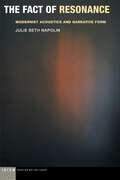
The Fact of Resonance: Modernist Acoustics and Narrative Form (Idiom: Inventing Writing Theory)
Par Julie Beth Napolin. 2020
Shortlisted, 2021 Memory Studies Association First Book AwardThe Fact of Resonance returns to the colonial and technological contexts in which…
theories of the novel developed, seeking in sound an alternative premise for theorizing modernist narrative form. Arguing that narrative theory has been founded on an exclusion of sound, the book poses a missing counterpart to modernism’s question “who speaks?” in the hidden acoustical questions “who hears?” and “who listens?”For Napolin, the experience of reading is undergirded by the sonic. The book captures and enhances literature’s ambient sounds, sounds that are clues to heterogeneous experiences secreted within the acoustical unconscious of texts. The book invents an oblique ear, a subtle and lyrical prose style attuned to picking up sounds no longer hearable. “Resonance” opens upon a new genealogy of modernism, tracking from Joseph Conrad to his interlocutors—Sigmund Freud, Frantz Fanon, W. E. B. Du Bois, William Faulkner, and Chantal Akerman—the racialized, gendered, and colonial implications of acoustical figures that “drift” through and are transformed by narrative worlds in writing, film, and music.A major synthesis of resources gleaned from across the theoretical humanities, the book argues for “resonance” as the traversal of acoustical figures across the spaces of colonial and technological modernity, figures registering and transmitting transformations of “voice” and “sound” across languages, culture, and modalities of hearing. We have not yet sufficiently attended to relays between sound, narrative, and the unconscious that are crucial to the ideological entailments and figural strategies of transnational, transatlantic, and transpacific modernism. The breadth of the book’s engagements will make it of interest not only to students and scholars of modernist fiction and sound studies, but to anyone interested in contemporary critical theory.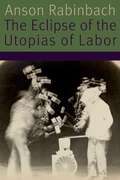
The Eclipse of the Utopias of Labor (Forms of Living)
Par Anson Rabinbach. 2018
The Eclipse of the Utopias of Labor traces the shift from the eighteenth-century concept of man as machine to the…
late twentieth-century notion of digital organisms. Step by step—from Jacques de Vaucanson and his Digesting Duck, through Karl Marx’s Capital, Hermann von Helmholtz’s social thermodynamics, Albert Speer’s Beauty of Labor program in Nazi Germany, and on to the post-Fordist workplace, Rabinbach shows how society, the body, and labor utopias dreamt up future societies and worked to bring them about. This masterful follow-up to The Human Motor, Rabinbach’s brilliant study of the European science of work, bridges intellectual history, labor history, and the history of the body. It shows the intellectual and policy reasons as to how a utopia of the body as motor won wide acceptance and moved beyond the “man as machine” model before tracing its steep decline after 1945—and along with it the eclipse of the great hopes that a more efficient workplace could provide the basis of a new, more socially satisfactory society.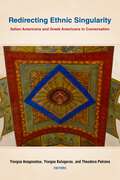
Redirecting Ethnic Singularity: Italian Americans and Greek Americans in Conversation (Critical Studies in Italian America)
Par Yiorgos Anagnostou, Yiorgos Kalogeras, and Theodora Patrona. 2022
Winner: Vasiliki Karagiannaki Prize for the Best Edited Volume in Modern Greek Studies Promotes the understanding of Italian Americans and…
Greek Americans through the study of their interactions and juxtapositions.Redirecting Ethnic Singularity: Italian Americans and Greek Americans in Conversation contributes to U.S. ethnic and immigration studies by bringing into conversation scholars working in the fields of Italian American and Greek American studies in the United States, Europe, and Australia. The work moves beyond the “single group” approach—an approach that privileges the study of ethnic singularity––to explore instead two ethnic groups in relation to each other in the broader context of the United States. The chapters bring into focus transcultural interfaces and inquire comparatively about similarities and differences in cultural representations associated with these two groups.This co-edited volume contributes to the fields of transcultural and comparative studies. The book is multi-disciplinary. It features scholarship from the perspectives of architecture, ethnomusicology, education, history, cultural and literary studies, and film studies, as well as whiteness studies. It examines the production of ethnicity in the context of American political culture as well as that of popular culture, including visual representations (documentary, film, TV series) and “low brow” crime fiction. It includes analysis of literature. It involves comparative work on religious architecture, transoceanic circulation of racialized categories, translocal interconnections in the formation of pan-Mediterranean identities, and the making of the immigrant past in documentaries from Italian and Greek filmmakers. This volume is the first of its kind in initiating a multidisciplinary transcultural and comparative study across European Americans.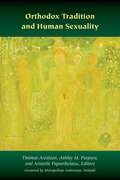
Orthodox Tradition and Human Sexuality (Orthodox Christianity and Contemporary Thought)
Par Thomas Arentzen, Ashley M. Purpura, and Aristotle Papanikolaou. 2022
Sex is a difficult issue for contemporary Christians, but the past decade has witnessed a newfound openness regarding the topic…
among Eastern Orthodox Christians. Both the theological trajectory and the historical circumstances of the Orthodox Church differ radically from those of other Christian denominations that have already developed robust and creative reflections on sexuality and sexual diversity. Within its unique history, theology, and tradition, Orthodox Christianity holds rich resources for engaging challenging questions of sexuality in new and responsive ways. What is at stake in questions of sexuality in the Orthodox tradition? What sources and theological convictions can uniquely shape Orthodox understandings of sexuality? This volume aims to create an agora for discussing sex, and not least the sexualities that are often thought of as untraditional in Orthodox contexts.Through fifteen distinct chapters, written by leading scholars and theologians, this book offers a developed treatment of sexuality in the Orthodox Christian world by approaching the subject from scriptural, patristic, theological, historical, and sociological perspectives. Chapters devoted to practical and pastoral insights, as well as reflections on specific cultural contexts, engage the human realities of sexual diversity and Christian life. From re-thinking scripture to developing theologies of sex, from eschatological views of eros to re-evaluations of the Orthodox responses to science, this book offers new thinking on pressing, present-day issues and initiates conversations about homosexuality and sexual diversity within Orthodox Christianity.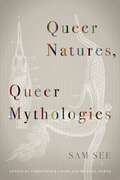
Queer Natures, Queer Mythologies
Par Sam See. 2020
Queer Natures, Queer Mythologies collects in two parts the scholarly work—both published and unpublished—that Sam See had completed as of…
his death in 2013.In Part I, in a thorough reading of Darwin, See argues that nature is constantly and aimlessly variable, and that nature itself might be considered queer. In Part II, See proposes that, understood as queer in this way, nature might be made the foundational myth for the building of queer communities.With essays by Scott Herring, Heather Love, and Wendy Moffat.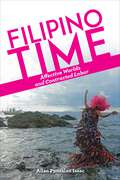
Filipino Time: Affective Worlds and Contracted Labor
Par Allan Punzalan Isaac. 2022
From spectacular deaths in a drag musical to competing futures in a call center, Filipino Time examines how contracted service…
labor performed by Filipinos in the Philippines, Europe, the Middle East, and the United States generates vital affects, multiple networks, and other lifeworlds as much as it disrupts and dislocates human relations. Affective labor and time are re-articulated in a capacious archive of storytelling about the Filipino labor diaspora in fiction, musical performance, ethnography, and documentary film. Exploring these cultural practices, Filipino Time traces other ways of sensing, making sense of, and feeling time with others, by weaving narratives of place and belonging out of the hostile but habitable textures of labortime. Migrant subjects harness time and the imagination in their creative, life making capacities to make communal worlds out of one steeped in the temporalities and logics of capital.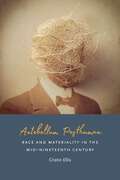
Antebellum Posthuman: Race and Materiality in the Mid-Nineteenth Century
Par Cristin Ellis. 2018
From the eighteenth-century abolitionist motto “Am I Not a Man and a Brother?” to the Civil Rights-era declaration “I AM…
a Man,” antiracism has engaged in a struggle for the recognition of black humanity. It has done so, however, even as the very definition of the human has been called into question by the biological sciences. While this conflict between liberal humanism and biological materialism animates debates in posthumanism and critical race studies today, Antebellum Posthuman argues that it first emerged as a key question in the antebellum era. In a moment in which the authority of science was increasingly invoked to defend slavery and other racist policies, abolitionist arguments underwent a profound shift, producing a new, materialist strain of antislavery. Engaging the works of Douglass, Thoreau, and Whitman, and Dickinson, Cristin Ellis identifies and traces the emergence of an antislavery materialism in mid-nineteenth century American literature, placing race at the center of the history of posthumanist thought. Turning to contemporary debates now unfolding between posthumanist and critical race theorists, Ellis demonstrates how this antebellum posthumanism highlights the difficulty of reconciling materialist ontologies of the human with the project of social justice.